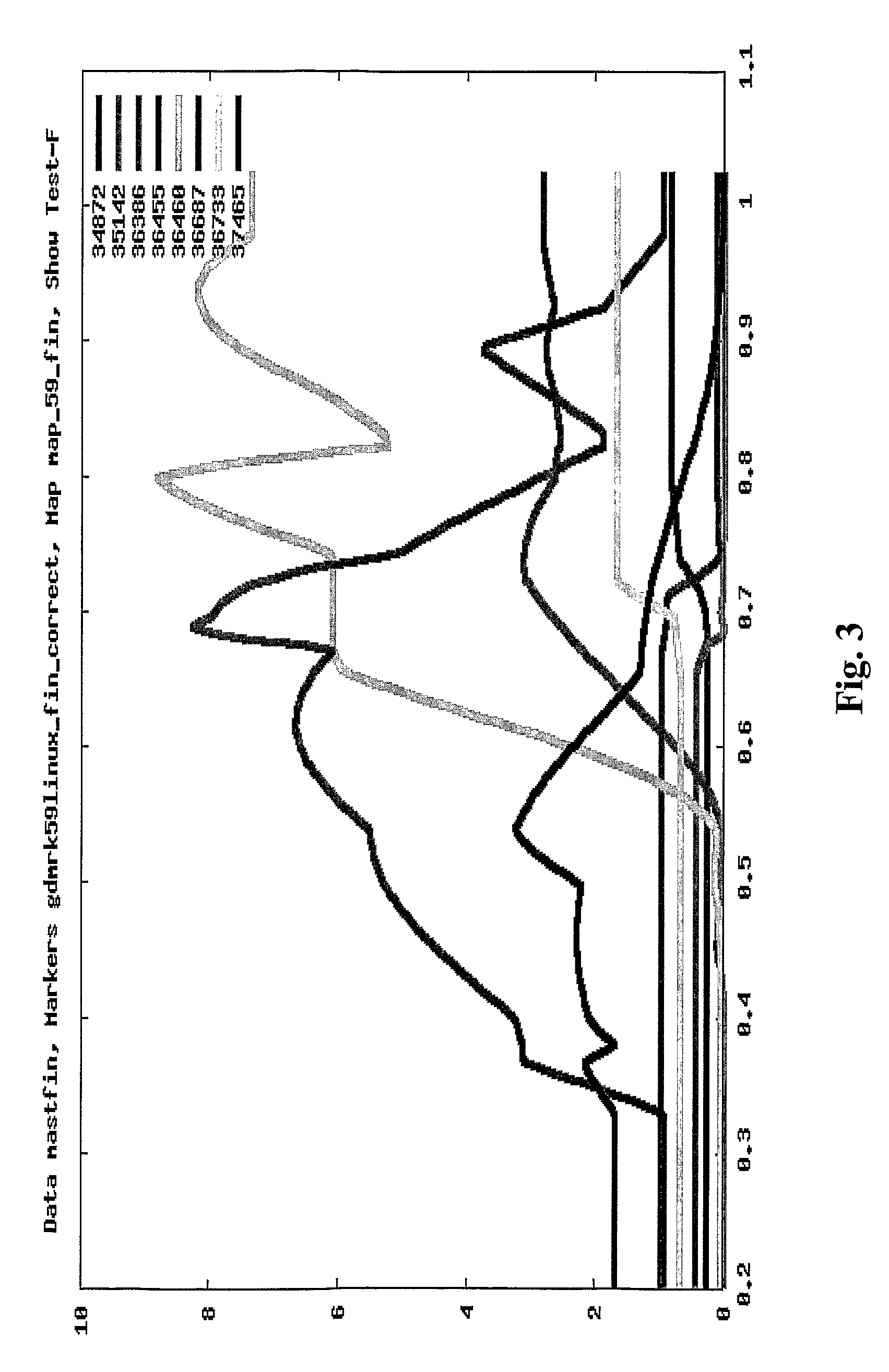Qtls for Mastitis Resistance in Cattle
a technology of mastitis resistance and cattle, applied in the field of qtls for mastitis resistance in cattle, can solve the problems of poor quality, farmers do not have the option of diverting milk from sub-clinical mastitic cows, and cannot detect sub-clinical mastitis visually
- Summary
- Abstract
- Description
- Claims
- Application Information
AI Technical Summary
Benefits of technology
Problems solved by technology
Method used
Image
Examples
example 1
BTA9
[0160]A number of statistical methods as described below were used in the determination of genetic markers associated or linked to mastitis and thus mastitis resistance.
[0161]Linkage analysis (LA) is used to identify QTL by typing genetic markers in families to chromosome regions that are associated with disease or trait values within pedigrees more often than are expected by chance. Such linked regions are more likely to contain a causal genetic variant. The data was analysed with a series of models. Initially, a single trait model using a multipoint regression approach for all traits were analysed within family. Chromosomes with significant effects within families were analysed with the variance component method to validate QTL found across families and for characterization of QTL.
[0162]Population allele frequencies at the markers were estimated using an EM-algorithm. Allele frequencies were subsequently assumed known without ...
example 2
BTA11
[0179]A number of statistical methods as described below were used in the determination of genetic markers associated or linked to mastitis and thus mastitis resistance.
[0180]Linkage analysis (LA) is used to identify QTL by typing genetic markers in families to chromosome regions that are associated with disease or trait values within pedigrees more often than are expected by chance. Such linked regions are more likely to contain a casual genetic variant. The data was analysed with a series of models. Three complementary approaches were used: (i) within half-sib family segregation analysis by regression based method (Haley and Knott, 1992) using GDQTL software (B. Guldbrandsten, 2005 personal communication); (ii) across family linkage analysis using variance component method, and (iii) combined linkage disequilibrium linkage analysis (LDLA) using variance component method. Each family was individually analyzed by using GDQTL to determine the sire...
PUM
| Property | Measurement | Unit |
|---|---|---|
| resistance | aaaaa | aaaaa |
| mastitis resistance | aaaaa | aaaaa |
| body temperature | aaaaa | aaaaa |
Abstract
Description
Claims
Application Information
 Login to View More
Login to View More - R&D
- Intellectual Property
- Life Sciences
- Materials
- Tech Scout
- Unparalleled Data Quality
- Higher Quality Content
- 60% Fewer Hallucinations
Browse by: Latest US Patents, China's latest patents, Technical Efficacy Thesaurus, Application Domain, Technology Topic, Popular Technical Reports.
© 2025 PatSnap. All rights reserved.Legal|Privacy policy|Modern Slavery Act Transparency Statement|Sitemap|About US| Contact US: help@patsnap.com



